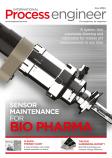Blasting machines are widely used in heavy industry, typically to clean iron, steel, non-cast parts or forgings. They might also prepare surfaces to be painted or coated.
As with many standard industry pieces, new models are being automated for efficiency and the shotblaster is no different.
Last year, industrial equipment manufacturer Rosler partnered with automation specialist Teqram to help their client Ottostahl to update a 60-year-old mechanical rotary table shot blast machine.
Ottostahl, a German component parts manufacturer, has an inventory of 4,000 tons of different steel grades and qualities up to 30mm thick. It creates highly precies plasma- or flame-cut components and many of these require surface preparation from a shot blaster.
To meet its business needs, the company asked Rosler and Teqram to created a shotblaster that operated within shorter time cycles, was more energy efficient and helped relieve staff from monotonous physical activity.
The shot-blasting department
The company’s shot blasting department uses three pieces of equipment; two continuous flow roller conveyor machines with an operating width of 3,800 mm and a rotary table blast machine. The old rotary table machine was replaced by a RDT 150 system from Rösler.
Rosler and Teqram supplied a fully automatic mechanical handling device by developing an automatic solution around the Easy Shotblaster RDT 150 machine.
The new blast system is integrated into a manufacturing cell measuring eight-by-eight metres and consisting of an intelligent stationary robot and the shot-blast machine with a load capacity of up to 200kg and equipped with suitable accessories.
With its innovative image processing technology, the vision-controlled robot automatically recognises the components placed into its working section, regardless of their position on the pallet. As such, it doesn’t need to be taught or programmed – a potentially time consuming activity. Moreover, with the intuitive interface the operator requires no special knowledge.
The robot picks up the components and places them on the rotary table in optimum position then provides component data to the machine controls for selecting a suitable processing program. Once half of the cycle is over, the robot automatically turns the components on the rotary table to blast the other side then returns the finished work pieces to the pallet when cleaning is done.
The RDT 150 offers the Ottostahl factory efficient blast cleaning of a broad range of sheet metal components combined with drastically reduced labour input and improved working conditions for employees.


















